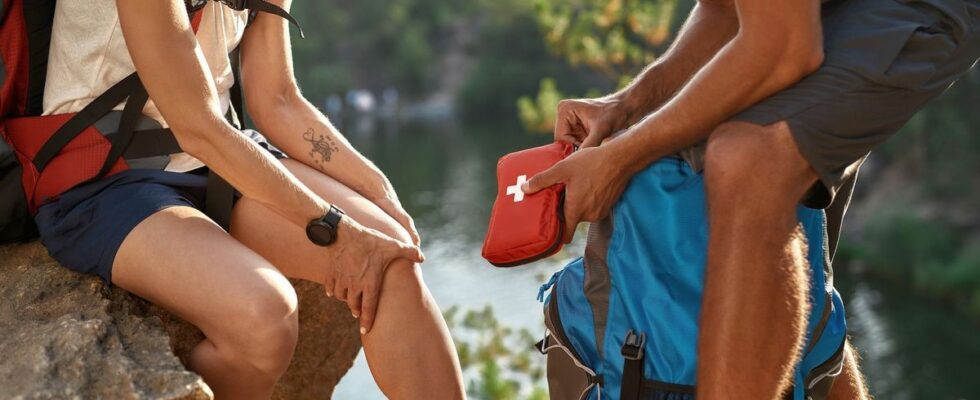Published on
updated on
Reading 3 min.
in collaboration with
Dr Gérald Kierzek (Medical Director of Doctissimo)
Medical validation:
November 7, 2024
While certain first aid actions seem obvious, others should be avoided. Here are 7 false good ideas to ban in the event of a medical emergency.
Mastering first aid can save lives in the event of a medical emergency. But in France, too few people are trained in lifesaving actions and many myths persist on this subject. Here are 7 preconceived ideas about first aid, brushed aside by Dr Gérald Kierzek, emergency doctor and medical director of Doctissimo.
The French are bad at first aid
According to a survey carried out in 2019 by the IFOP, less than one in two French people say they have mastered life-saving actions. However, when faced with an emergency (cardiac arrest, hemorrhage, ingestion of toxic substances, etc.) knowing how to provide first aid can literally save a life.
In this situation, the time factor is decisive: victims are 8 times more likely to survive when a person is able to quickly perform cardiopulmonary resuscitation.
It is therefore essential that the French are better trained (and better informed) about these life-saving actions.
First aid: 7 preconceived ideas to know
Apply heat to a muscle injury, lean back in case of nosebleed…are all bad ideas, still common. Here are the 7 most common misconceptions, never to be reproduced again!
Do not move a road accident victim
“A road accident victim should never be moved unless their life is in immediate danger. Moving a person with a possible spinal injury can make their injuries worse. The best practice is to secure the scene of the accident and wait for professional help. recalls Dr. Gérald Kierzek.
Do not lift a broken limb
“Contrary to popular belief, you should not lift or tie a fractured limb with a hard object. This can make the fracture worse and cause more pain.” says the medical director of Doctissimo.
You should not try to prevent a person who is convulsing from swallowing their tongue.
“This is a dangerous and unnecessary myth and you risk getting bitten. It is anatomically impossible to swallow your tongue. Trying to hold the tongue of a convulsing person risks getting bitten and injuring the victim. Good practice is to keep dangerous objects away,call for help and place the person in side safety position once the convulsions are over, underlines the doctor.
You should not apply butter to a burn
“HASApplying butter, oil or any other fatty substance to a burn is wrong. This can make the burn worse and increase the risk of infection. However, it is recommended to cool the wound by running warm water over the burned area for approximately 20 minutes. advises the medical expert.
You should not drink milk after ingesting a toxic substance or induce vomiting.
“This is a dangerous myth because making someone vomit, or making oneself vomit, will cause damage when the product returns which has already caused damage by being swallowed. For its part, milk does not neutralize the burn and will hinder medical intervention. Good practice is to prevent emergency services but above all to avoid the ingestion of toxic products, by securing them, out of the reach of children. warns Dr. Gérald Kierzek.
Mouth-to-mouth is not a priority over cardiac massage
“In the event of cardiac arrest, the cardiac massage has priority. If you are not trained or reluctant to perform mouth-to-mouth resuscitation, focus on CPR while waiting for help to arrive. It’s the massage that oxygenates the brain.” recalls the medical director of Doctissimo.
Making a tourniquet is not always necessary in the event of hemorrhage
“The tourniquet is an exceptional measure that should only be used as a last resort. In most cases, direct compression of the wound is sufficient to stop the bleeding“, concludes the doctor.

